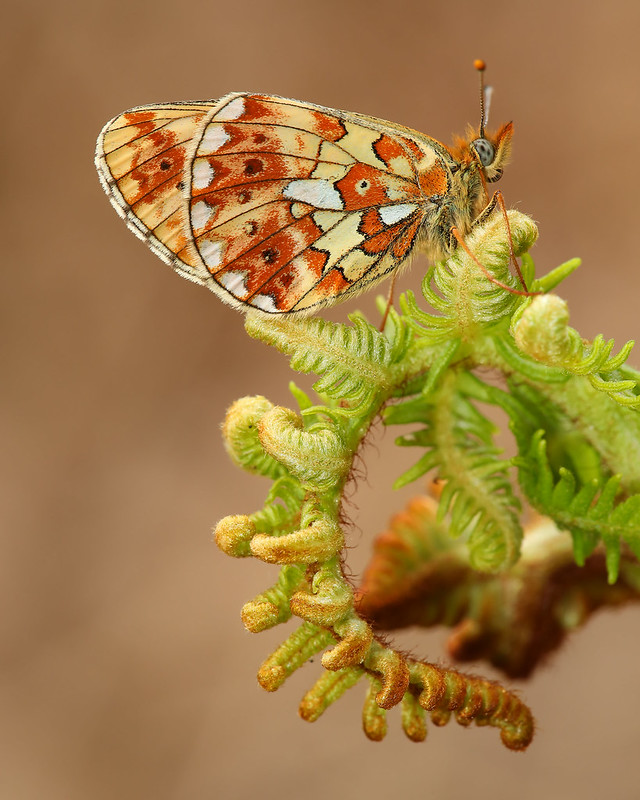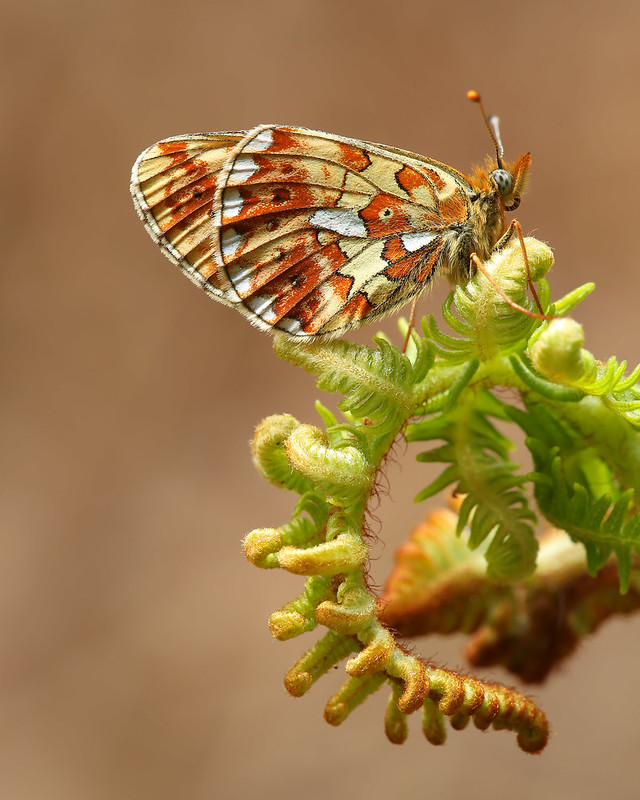- Messages
- 305
- Name
- Dave
- Edit My Images
- Yes
This is probably teaching most people on here how to suck eggs, but some of you may find this useful!
I regularly use off-camera fill-flash when photographing insects. In dull weather it boosts the contrast of the image, and in sunny weather it lightens harsh shadows.
If I'm hand-holding, the flash is mounted on a bracket to the side of the lens, but if I'm using a tripod I'll hand-hold the flash. Altering the position of the flash when hand-holding can have quite an effect on the image produced:
In this shot I pointed the flash more or less straight at the butterfly; it brightens the image (taken on a cloudy morning) but the butterfly's wings look rather flat and 2D.
 Pearl-bordered Fritillary (Boloria euphrosyne) by Dave O'Brien, on Flickr
Pearl-bordered Fritillary (Boloria euphrosyne) by Dave O'Brien, on Flickr
In the second shot I held the flash above the butterfly and pointed it down. The resulting shadows emphasise the "corrugated" 3D shape of the wings and to me at least is a more pleasing image.
 Pearl-bordered Fritillary (Boloria euphrosyne) by Dave O'Brien, on Flickr
Pearl-bordered Fritillary (Boloria euphrosyne) by Dave O'Brien, on Flickr
Both photos were taken at 1/100s, f13 and ISO640, using a Canon 5DMkIV, Canon 180mm f3.5L Macro lens and Canon Speedlite 430EX III-RT flash.
What do people think?
Cheers,
Dave
I regularly use off-camera fill-flash when photographing insects. In dull weather it boosts the contrast of the image, and in sunny weather it lightens harsh shadows.
If I'm hand-holding, the flash is mounted on a bracket to the side of the lens, but if I'm using a tripod I'll hand-hold the flash. Altering the position of the flash when hand-holding can have quite an effect on the image produced:
In this shot I pointed the flash more or less straight at the butterfly; it brightens the image (taken on a cloudy morning) but the butterfly's wings look rather flat and 2D.
 Pearl-bordered Fritillary (Boloria euphrosyne) by Dave O'Brien, on Flickr
Pearl-bordered Fritillary (Boloria euphrosyne) by Dave O'Brien, on FlickrIn the second shot I held the flash above the butterfly and pointed it down. The resulting shadows emphasise the "corrugated" 3D shape of the wings and to me at least is a more pleasing image.
 Pearl-bordered Fritillary (Boloria euphrosyne) by Dave O'Brien, on Flickr
Pearl-bordered Fritillary (Boloria euphrosyne) by Dave O'Brien, on FlickrBoth photos were taken at 1/100s, f13 and ISO640, using a Canon 5DMkIV, Canon 180mm f3.5L Macro lens and Canon Speedlite 430EX III-RT flash.
What do people think?
Cheers,
Dave


